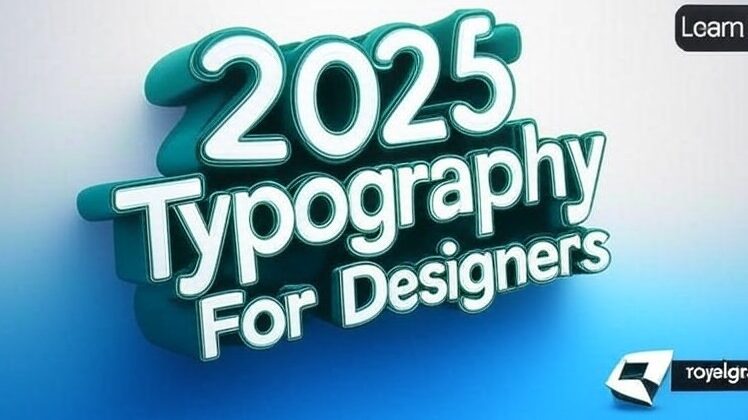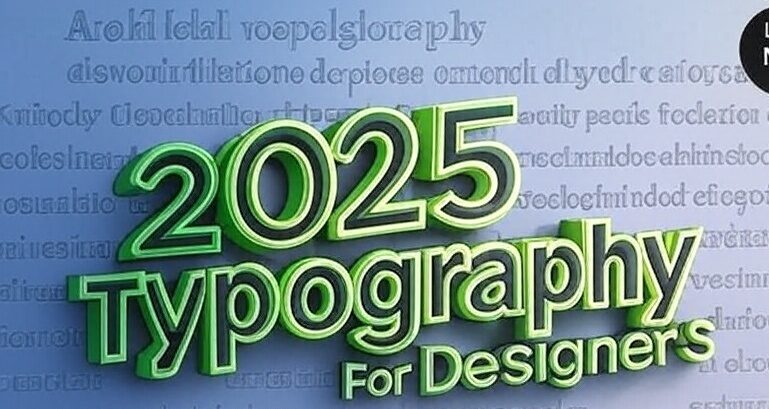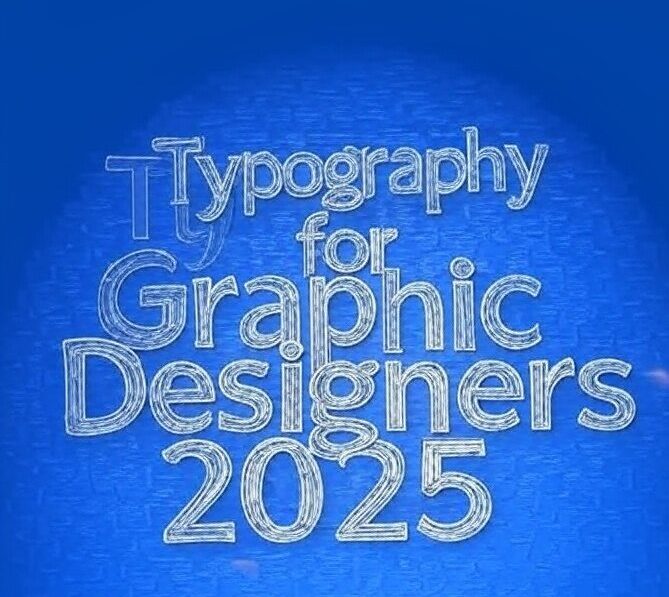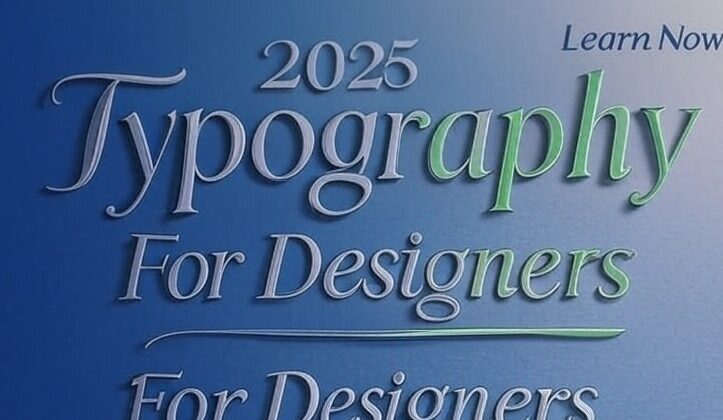
Typography is the backbone of stunning graphic design—master it in 2025 to stand out! In 2025, typography for graphic designers 2025 shapes brand identity and user experience, making it a critical skill for learners at royalgraphix.co.ke. It transforms text into a visual art form, influencing emotions and readability with every letter and space. Whether you’re crafting a logo or a poster, typography is your tool to captivate audiences and elevate designs. This guide equips you with foundational skills, explores 2025 trends, introduces essential tools, and offers practical projects to excel in this dynamic field. Our goal is to empower you with the knowledge to create impactful designs that resonate with clients and peers. Explore additional tutorials and exercises at royalgraphix.co.ke to enhance your journey and build a robust skill set. Ready to unlock the power of typography and boost your graphic design career? Let’s dive into the essentials that will define your success in 2025!

Section 1: Typography Basics
Understanding basics is key to mastering typography for graphic designers 2025, laying a solid foundation for creative expression. Typography is more than choosing fonts—it’s about crafting a visual language that communicates effectively and enhances design projects.
Font Types: Exploring font types is the first step. Serif fonts, like Times New Roman, feature small lines or extensions that add a traditional, elegant touch, ideal for formal documents or books. Sans-serif fonts, such as Helvetica, offer a clean, modern look, perfect for digital interfaces and branding in 2025’s minimalist trends. Script fonts, like Brush Script, mimic handwriting, adding a personal or artistic flair to invitations or logos. Each type serves a unique purpose, and understanding their strengths helps designers select the right fit for any project.
Hierarchy: Learning to use size, weight, and spacing guides viewer attention, creating a clear structure. Size determines the prominence of headings versus body text, while weight—ranging from light to bold—emphasizes key information. Spacing, including line height and letter spacing (kerning), ensures readability and visual balance. For example, a larger headline with bold weight draws the eye, while generous line spacing keeps paragraphs legible. Mastering these elements is crucial for designing intuitive layouts that align with 2025’s demand for user-friendly designs.
Tip: Practice identifying font styles in everyday designs. Next time you see a magazine, website, or billboard, note the font types and how hierarchy directs your focus. This exercise builds your eye for detail and prepares you for applying these basics in your own work at royalgraphix.co.ke.
These foundational skills empower designers to create impactful typography, setting the stage for advanced techniques and trends in 2025. By mastering font types and hierarchy, you’ll develop a versatile toolkit to tackle diverse design challenges with confidence.
Section 2: 2025 Trends
Stay ahead with 2025 trends in typography for graphic designers 2025, shaping the future of visual communication. As design evolves, embracing these trends ensures your work remains relevant and impactful in a competitive market.
Variable Fonts: These flexible, space-saving fonts are revolutionizing responsive design. Unlike traditional fonts with fixed styles, variable fonts allow designers to adjust weight, width, and slant within a single file—perfect for adapting to different screen sizes in 2025’s multi-device world. For example, a variable font like “Roboto Flex” can shift from thin to bold seamlessly, optimizing performance without multiple file downloads. This trend supports efficient workflows and aligns with the demand for lightweight, adaptable typography at royalgraphix.co.ke.
Sustainable Typography: Eco-friendly font choices are gaining traction, reducing digital carbon footprints. Designers are opting for fonts designed with minimal glyph complexity or those supporting energy-efficient rendering, like “Greycliff CF.” This approach not only lowers environmental impact but also appeals to eco-conscious clients. In 2025, sustainable typography reflects a growing commitment to green design practices, making it a standout skill for graphic designers.
Trend Tip: Experiment with bold, minimal layouts for modern appeal. Combine a variable font with ample white space and a single accent color to create striking designs that resonate with 2025 aesthetics. Test these layouts on a mock poster or website at royalgraphix.co.ke to see how simplicity enhances readability and style.
These trends position designers to lead in 2025’s innovative design landscape. Variable fonts offer versatility, while sustainable typography promotes responsibility—both essential for creating cutting-edge projects. By integrating these elements, learners can elevate their portfolios and meet the industry’s evolving expectations with confidence.

Section 3: Tools and Techniques
Tools empower your skills in typography for graphic designers 2025, unlocking new levels of creativity and precision. Leveraging the right resources and techniques is essential for crafting professional designs in today’s dynamic market.
Adobe Fonts: Access premium typefaces with easy integration through Adobe Fonts, a library synced with Creative Cloud. In 2025, it offers thousands of high-quality fonts, like “Proxima Nova,” ideal for branding or editorial work. Its seamless integration with Photoshop and Illustrator allows designers to apply fonts instantly, enhancing workflows for learners at royalgraphix.co.ke. This tool ensures you have cutting-edge typefaces to elevate your projects.
Figma: Collaborate on typography with real-time design tweaks using Figma, a cloud-based design platform. In 2025, its updated typography features include advanced text styling and team sharing, perfect for group projects or client feedback. Designers can adjust font sizes, weights, and spacing live, making Figma a go-to for responsive design and prototyping. This fosters collaboration and efficiency in typography for graphic designers 2025.
Technique: Use kerning and leading to refine text layouts. Kerning adjusts the space between individual letter pairs for a balanced look, while leading (line spacing) controls the vertical gap between lines, improving readability. For instance, tighten kerning in a logo title and increase leading in a paragraph to enhance legibility. Practice these adjustments on a mock design at royalgraphix.co.ke to master clean, professional typography.
These tools and techniques align with 2025’s demand for efficient, collaborative, and polished design processes. Adobe Fonts provides premium resources, Figma enables teamwork, and kerning/leading refine your craft. Together, they equip designers to produce standout work, building a strong foundation for advanced typography projects in the coming year.
Section 4: Practical Projects
Apply skills with hands-on projects for typography for graphic designers 2025, turning theory into tangible design success. These exercises, perfect for learners at royalgraphix.co.ke, build confidence and showcase your growing expertise in a competitive market.
Logo Design: Create a brand mark using custom fonts to define a company’s identity. Start by selecting a unique typeface—such as a bold sans-serif like “Futura” or an elegant script like “Great Vibes”—and customize it with tools like Adobe Fonts. Focus on kerning to ensure letter spacing reflects the brand’s personality, and pair it with a simple icon for impact. This project hones your ability to craft memorable, scalable logos that thrive in 2025’s digital-first world.
Poster Creation: Design a promotional poster with hierarchical text to grab attention. Use a large, bold headline (e.g., event name) in a variable font like “Roboto Flex,” followed by smaller subheadings and body text with adjusted leading for readability. Incorporate color contrasts to emphasize key messages, aligning with 2025’s trend toward bold, minimal layouts. This exercise teaches you to structure content effectively for print or online use.
Project Tip: Test designs across devices for consistency. Preview your logo on a smartphone, tablet, and desktop, and check your poster on both high-res screens and printouts. Adjust font sizes or spacing as needed to ensure a uniform look, a critical skill for typography for graphic designers 2025. Use royalgraphix.co.ke’s free resources to simulate different viewing conditions and refine your work.
These projects bridge learning and application, preparing you for real-world challenges. Logo design sharpens branding skills, while poster creation builds layout expertise—both essential for standing out in 2025’s design landscape. By testing across platforms, you ensure versatility and professionalism in every project.

Conclusion
Mastering typography for graphic designers 2025 through basics, trends, tools, and projects builds a strong design foundation, empowering you to create impactful work in 2025’s competitive landscape. From understanding font types and hierarchy to embracing variable fonts and sustainable practices, you’ve gained a versatile skill set. Tools like Adobe Fonts and Figma, combined with hands-on logo and poster projects, prepare you to meet industry demands with confidence. Start your typography journey today at royalgraphix.co.ke, where you can access more resources to refine your craft! For a deeper dive, explore “Typography Basics for Graphic Designers in 2025: Start Here” to solidify your skills, and check out “2025 Typography Trends Every Graphic Designer Should Know” to stay ahead. Share your favorite typography project in the comments—whether it’s a logo or poster—and inspire fellow learners at royalgraphix.co.ke. Together, let’s elevate our designs and shape the future of typography for graphic designers 2025!
